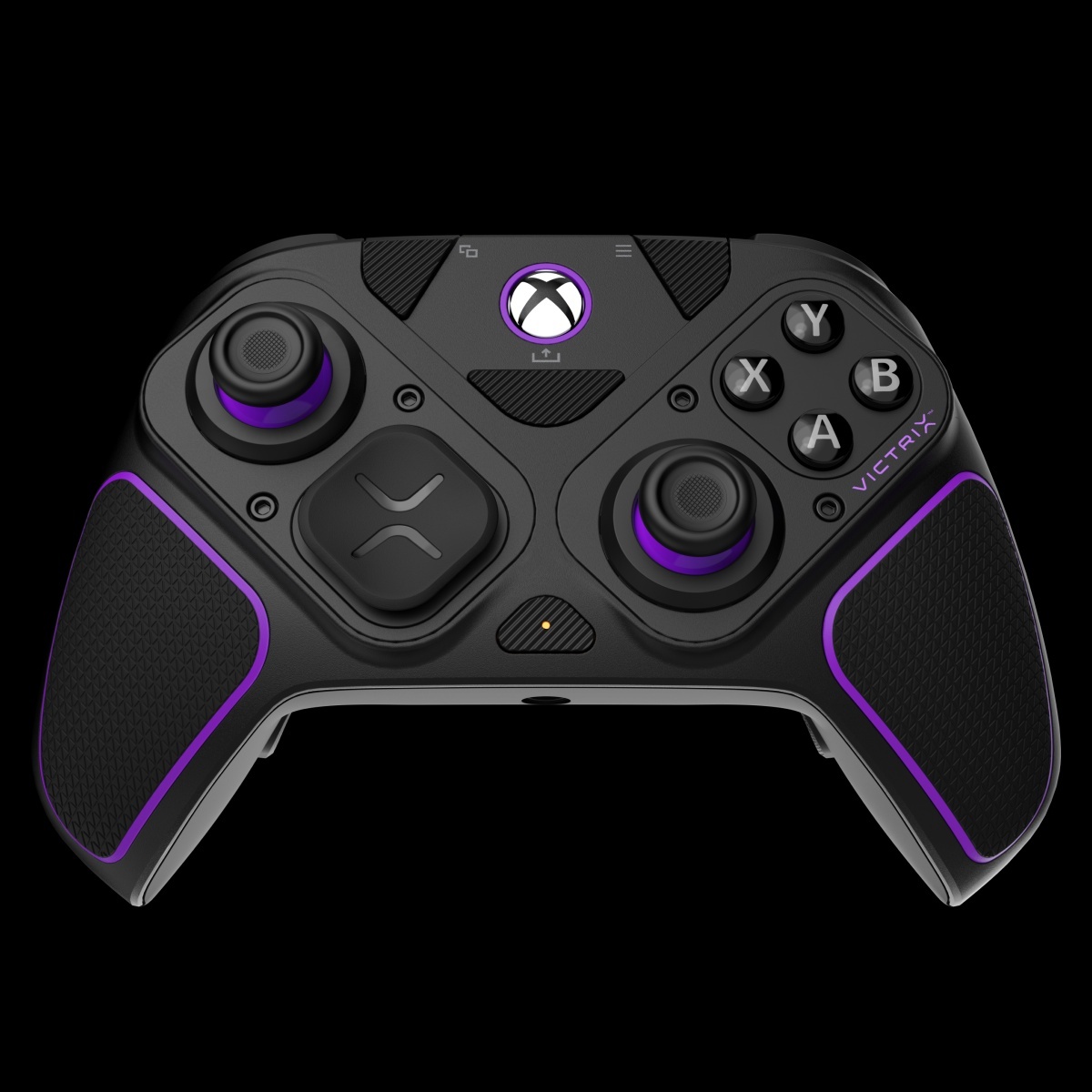
For the hefty sum of $179.99, there needs to be some attention-grabbing qualities in a controller demanding such a price. It must be said, PDP has done a bang-up job of hitting the mark in several ways here, ensuring fighting game players, in particular, will want to highly consider this gamepad - due in large part to its interchangeable sticks and buttons.
The Victrix Pro BFG is an extremely comfortable and lightweight controller that can be utilised on Xbox Series X/S, Xbox One and Windows 10/11 PCs, both wirelessly via a USB dongle or Bluetooth, and wired through a 3-meter braided USB cable. In the immaculately presented carrying case are the aforementioned tools required for connection, of which hooking up wirelessly is as simple as popping the stick into your PC and pushing the central Xbox button. In no time at all, the pad is ready to go.
It is recommended before diving straight into any game, however, to download the Victrix Control Hub app, and using this to update the controller to the latest firmware. Although the four back paddles can be remapped very easily with the Function button, the app also allows players to do so through a simple interface that presents a wider range of customisation options, including full button remapping, stick and trigger dead zone alterations, headset audio controls, and rumble intensity.
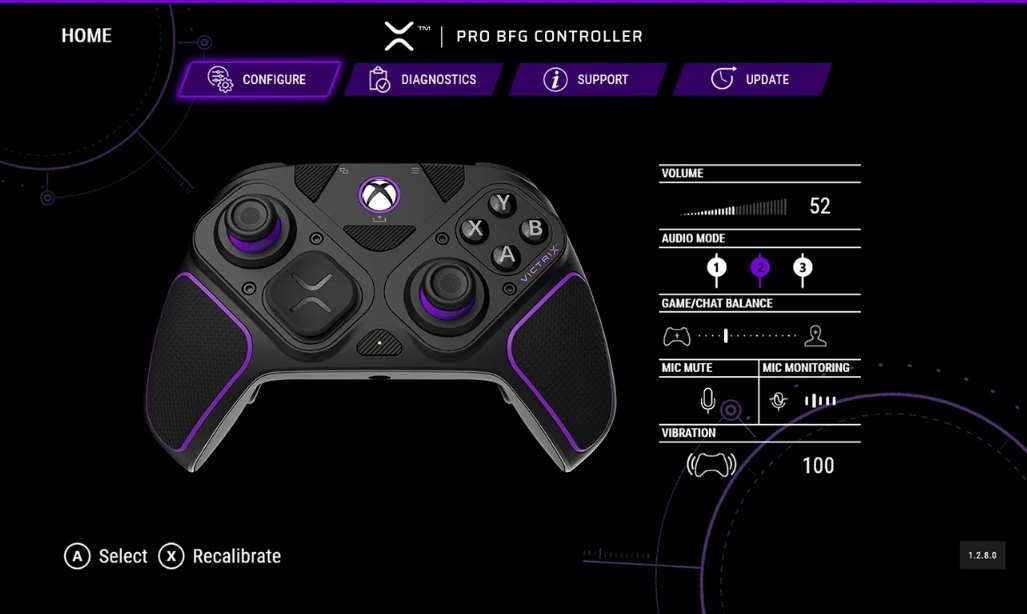
The big draw of the Pro BFG is its ability to swap and reposition stick and button modules that allow for different play styles and preferential layouts. The d-pad and left stick module, for example, can be rotated in order to create symmetrical or asymmetrical sticks, therefore allowing an Xbox user to play with the traditional PlayStation controller setup of both sticks placed low, if desired.
Unfortunately, those who prefer to have their right analogue stick in the upper position, perhaps reminiscent of the Wii U GamePad and Pro Controller, are out of luck, as the face button module cannot be rotated in such fashion. It is also worth pointing out that the face buttons themselves are a little on the small side - bigger than the tiny Nintendo Switch Joy-Con buttons, but a touch smaller than the Nintendo Switch Pro Controller buttons. Not really an issue for smaller hands, but noteworthy enough that bigger paws might get a little cramped over a longer play period.
Thankfully, the six-button fightpad module more than makes up for this shortcoming with chunky microswitch buttons that offer a satisfying tactile click to proceedings. There isn't room for a stick as a result of this module's layout, but with the titles fightpads are intended for, that isn't necessary, and allows a player to very comfortably compete in their favourite fighting games. There isn't anything preventing a player from using the fightpad module with any game that doesn't require a right analogue stick, either, and might suit someone intending to enjoy a few retro platformers with the larger tactile buttons.
Each module is easily removed by way of the included hex screwdriver, where there is no worry about losing screws as they always stay locked into the removable mechanism. It is simply a case of unscrewing, rotating or replacing the module in question, and then screwing back down.
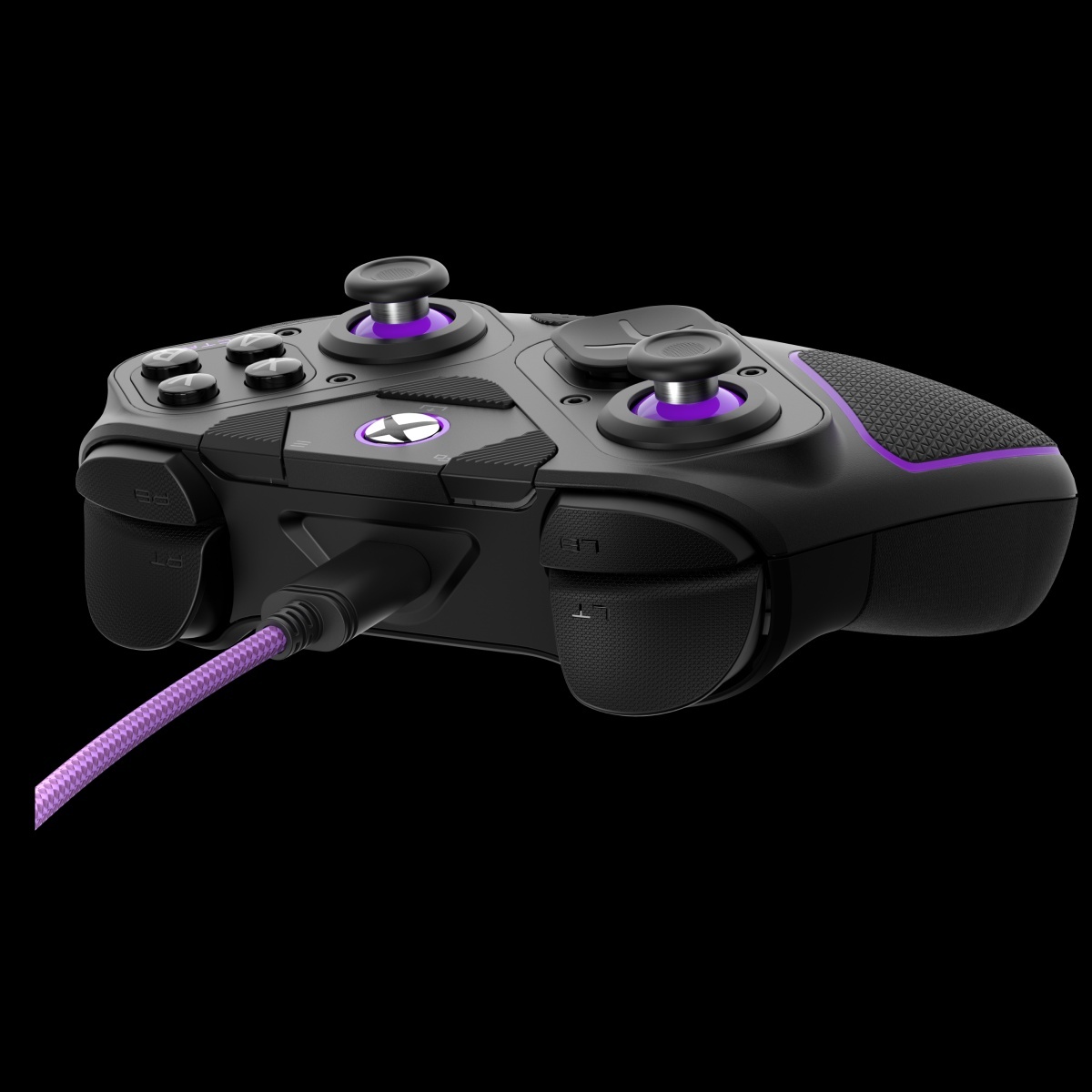
The customisation options don't end there, however, with three types of d-pad to pick from, on top of the four control sticks, of which there are two concaved standard sticks, one taller concaved stick, and one convex stick. It seems a bit odd to only offer one convex stick, especially for yours truly, who tends to prefer this design, and the one that is provided here perhaps could have done with some textured grip or a raised ridge akin to Nintendo Switch Joy-Con and Pro Controller sticks to prevent thumb slippage.
In general, though, these sticks are certainly some of the better ones out there, where the concaved designs aren't so deep that it is difficult to keep the thumb on top of, and there is a strong feeling of spring-back when pushing the sticks around - no sign of looseness here, giving the impression of something that is going to last.
There are even two types of control stick gate to further add to the possibilities, where the more standard full circle gates are set in by default, but two octagonal gates reminiscent of the GameCube controller are packed into this box, too. Although these eight-way gates may not be as popular amongst players, there are definitely people out there that have grown to appreciate this style - particularly fans of the GameCube that found great pleasure in smashing out directional attacks in Super Smash Bros. Melee. While in most games, full circle gates are preferred, for fighting games and side-scrolling platformers, octagonal gates work brilliantly, so their inclusion here is something to be admired.
Pleasingly, there is a familiar plus-shaped d-pad that Nintendo players will be glad to see, with two other designs in the form of a circular d-pad with diagonal surface area, and a square-shaped d-pad that visibly appears like a Master System control pad rotated 45 degrees (as observant Cubed3 colleague Mike remarked!).
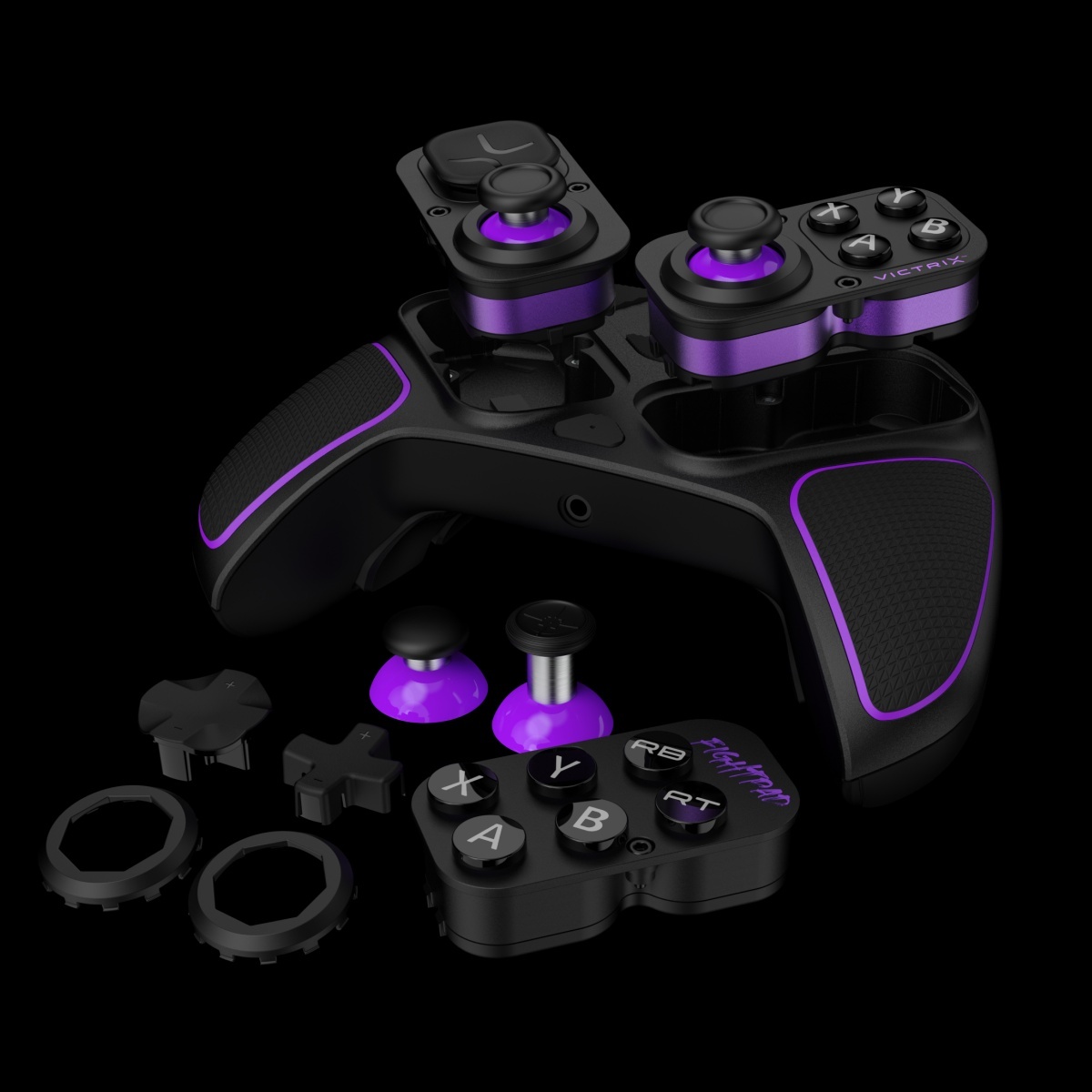
All three d-pads are comfortable in their own right, and which one is utilised will come down to personal preference. The traditional plus-shape is going to appeal to a wide range of people, especially those that started their gaming with the NES and SNES, but the slightly raised nature and shape of the circular d-pad has a very reassuring feeling to it, and its large surface area means diagonals come out well. Slightly larger still is the diamond shaped control pad, which surprises by how pleasant it resonates with bashing out inputs, again seemingly working great with diagonals.
As with any controller, the d-pad always takes some time and effort to get used to, but the experience on the Pro BFG has been rather great overall. It may require playing a few games to adapt and find the d-pad shape that works for the individual, but multiple sessions found that the diamond ended up a favourable choice personally, where its larger presence felt like it was able to hit those diagonal inputs easier than usual. Some slightly harder than normal pressing is needed at times, and not being as tactile as other d-pads elsewhere means it might not the be the absolute best it could be (something for a future upgrade, perhaps), but impressions are very positive in these tests.
Both the d-pad and sticks are removed by merely pulling them off with a bit of force. In the case of the d-pads, it can result in the piece flinging just about anywhere since it takes some effort to lift, but at least there is no chance of things falling apart during play.
When it comes to the analogue shoulder triggers, there is a handy clutch switch for each side that allows the user to stop the trigger at various depths, going so far as to essentially turn both triggers into instant tactile buttons. While the highest stopping point doesn't have the same microswitch feeling as the fightpad and bumper buttons, it does the job effectively of creating an extra instantaneous input on both sides.

The four back buttons, as well, are instant clickables, resting nicely underneath the natural position of the middle and ring fingers, but are not so soft that accidental presses may occur. That said, for those not quite accustomed to back paddles, it does take a little time to learn not to grip too hard, else this may just happen regardless. These buttons can be remapped easily through the Function button to quickly assign other inputs to them, freeing up thumbs during gameplay. It is just as easy to unassign a button and keep them unused, while a profile switch button on the back of the controller means up to three settings can be stored and rotated between on the fly.
The Victrix Pro BFG Wireless Controller stands tall, then, as an extremely enticing product, so there is a great deal of surprise that neither the analogue sticks nor triggers use Hall effect technology. Coming at a time when stick drift is more talked about and public knowledge than ever before thanks to high profile examples in Nintendo's Joy-Con and Sony's DualSense controllers, Hall effect tech is one of the most requested features in video game pads today.
For the asking price, one would expect Hall sensors in a controller of this calibre, because this is truly a highly impressive example of how to put together a solid gamepad with all the bells and whistles that not just fighting game players will benefit from. This factor alone may turn a potential customer away from the Pro BFG, such is the demand for the industry to make Hall effect controllers standard across the board now.
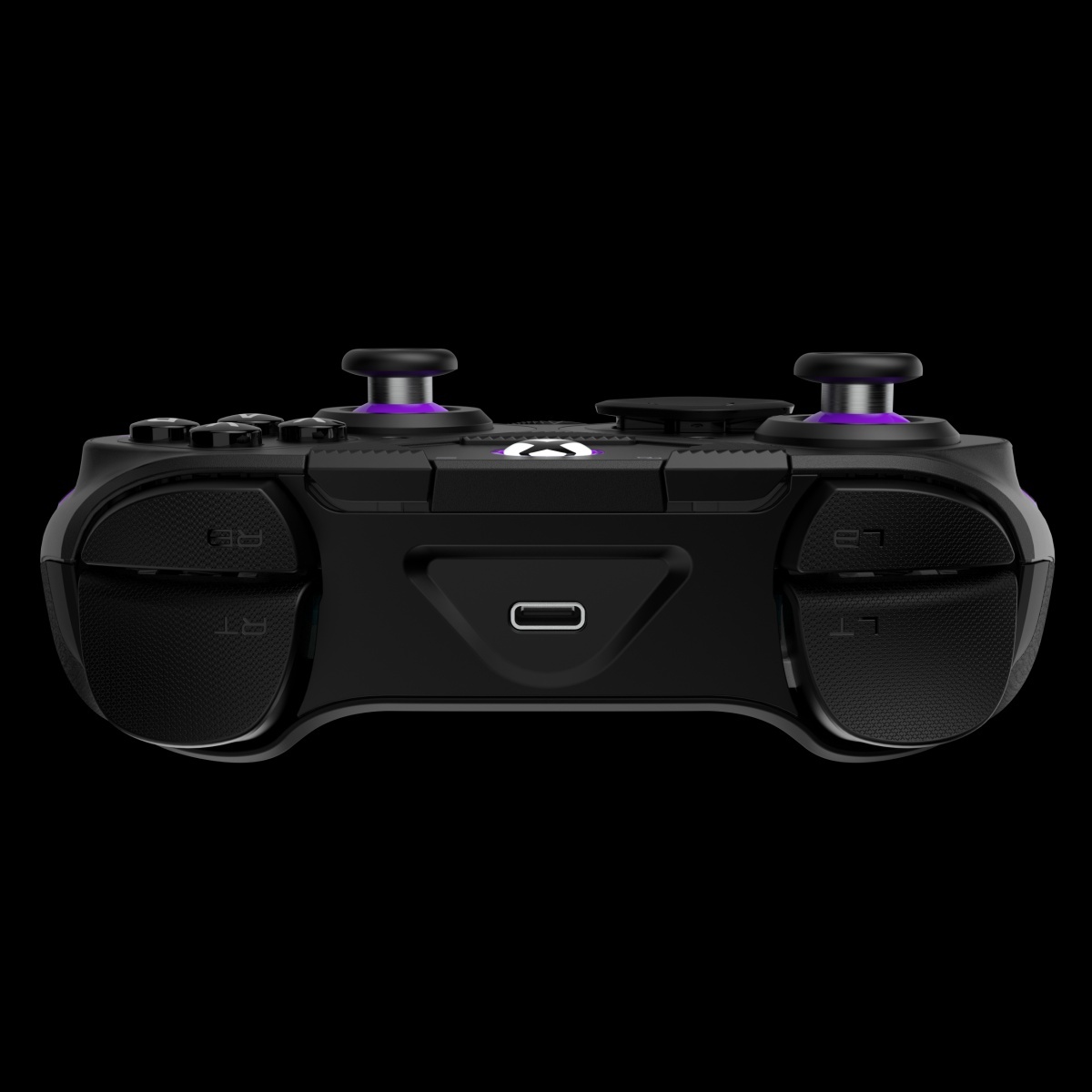
Great - Silver Award


 Sign In
Sign In 24.03.2024
24.03.2024
 Subscribe to this topic
Subscribe to this topic Features
Features





 Top
Top

